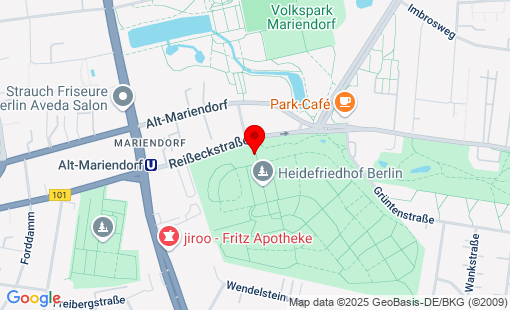Germany
Berlin-Tempelhof, Heidefriedhof
Total Occupation: 735 fatalities
Total Occupation: 735 fatalities
The name of the cemetery already indicates the idea behind its creation. The character of a heath landscape interspersed with mountain pines and juniper bushes is already apparent at the entrance. The cemeteries appear to be laid out without a pattern and are criss-crossed by winding paths. The date of the cemetery's opening, six years after the end of the Second World War, already gives an idea of the special nature of the graves of the victims of war and tyranny. The events of the last months of the war and the associated high death rates led to the need to find new burial areas for the numerous dead (to contain the risk of epidemics). As there were not enough cemeteries available in the inner-city area, emergency burial sites were set up in many places, including on the public grounds on the Bäumerplan at St. Josef Hospital (approx. 250 dead) and Wenckebach Hospital (approx. 330 dead). It was necessary to rebury the victims for health reasons and this was done in March 1952 at the newly established Heidefriedhof cemetery in Tempelhof. Most of the victims were former members of the Wehrmacht who had died in the above-mentioned hospital facilities (formerly Reserve Hospital No. 111 and No. 122). However, the number of civilian burials is also considerable. The dead were buried in individual graves. The design of the entire complex reveals a large oval, the southern tip of which tapers slightly and provides a view of a higher memorial. A total of over 70 dead, both civilians and soldiers, whose identification was not possible, are buried under this 9½ m high wooden cross. All graves are uniformly planted and have a small oak memorial cross bearing the name of the deceased.
